Ukraine emerged as an independent state following the collapse of the USSR in 1991. It was Europe's second largest country, after Russia, with a population of 41 million people.
Situated between Russia to its east and Poland to its west - how the country would pivot between Moscow and Brussels was an immediate fault-line.
In the 2004 presidential elections, it cracked. The "Orange Revolution", with massive demonstrations on the streets, emerged amid allegations that fraud had led to Russia-leaning Viktor Yanukovch beating EU-leaning Viktor Yushchenko.
The election was re-run, following weeks of protest, and Yushchenko won on that occasion. However, in 2010, Yanukovch was returned as President.
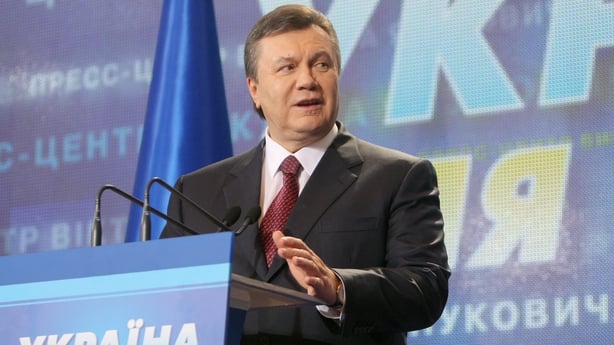
In 2013, and after years of negotiation, Ukraine has been due to sign an EU association deal, which involved closer cooperation and policy convergence.
However, President Yanukovych scuttled the deal in favour of closer cooperation with Russia.
This move triggered mass protests on Kyiv's independence square, or Maidan, in November.
Hundreds of thousands marched in the capital and across the country in daily opposition to the president's action.
Maidan
In February 2014, the stand-off between the now permanent protest on the Maidan and President Yanukovch's forces became increasingly violent.
Over 19 and 20 February more than 80 people were shot dead, most of them protestors who were killed by bullets from snipers.
Initially a compromise agreement was reached between the president and opposition parties, however the following day Yanukovych fled the country.
Ukraine tilted politically and significantly towards the west.
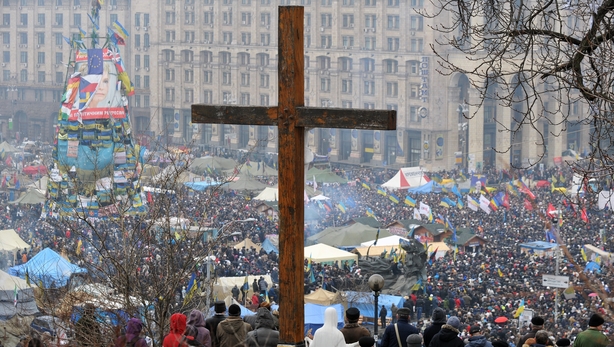
Crimea
Within days of Yanukovch's departure, military men in fatigues but no insignia appeared in Crimea - a Ukrainian peninsula the size of Belgium on the Black Sea.
Crimea has a majority Russian speaking majority among its population of more than 2 million people.
While part of Ukraine since 1991, many Russians viewed it as their territory.
Things escalated quickly. The military officers, who claimed to be locals, took over airports, ports and roads.
Soon it was under complete control by Russian forces. By March, Russia annexed the entire area into its territory.
Luhansk and Donetsk
By April, two Ukrainian provinces in the east - Luhansk and Donetsk - were partially taken over by Russian backed separatists.
These so-called People's Republics were bank-rolled and supported by Russia. At the same time, Moscow demanded the leaders were given both autonomy and a say in Ukrainian affairs, including foreign policy.
Ukraine called the areas "temporary occupied territories". It developed into a frozen war.
In 2015, the so-called Minsk II agreement delivered a ceasefire. However, Moscow maintained that Kyiv failed to deliver on the terms, including a significant degree of self-governance. Around 14,000 are estimated to have been killed over eight years.
NATO expansion
Russia has repeatedly claimed that NATO's expansion eastwards over the past 30 years, has endangered its security, while 14 eastern European countries have joined the alliance since 1997.
It says Ukraine must remain independent of NATO. EU leaders have dismissed this demand.
The EU says as an independent and sovereign state, Ukraine is entitled to decide what trade blocks it wants to join, and what military alliances it wants to become a member of.
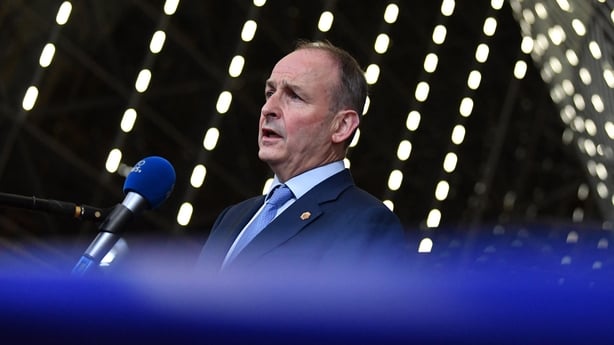
Taoiseach Micheál Martin says Ireland rejects the concept of "spheres of influence" in which a larger country can impose its will on a smaller country.
Russian build-up
In recent months, Russia has amassed tens of thousands of troops on its border with Ukraine.
It has also been allowed by Belarus to amass more troops on its border with Ukraine.
The Kremlin claimed - repeatedly - that it had absolutely no intention of invading and that the build-up of troops was a regular military exercise.
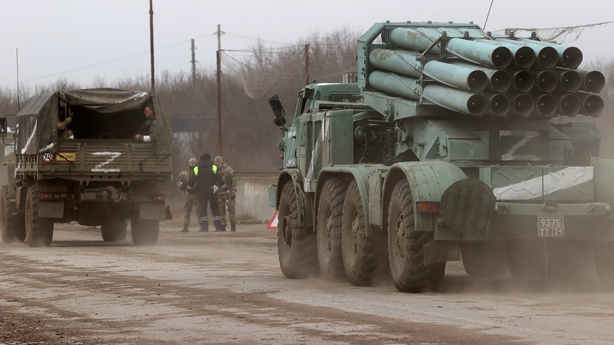
The President of Ukraine said he did not believe that Russia would invade his country, despite US intelligence saying it was imminent.
In recent weeks, there has been a flurry of high-level political engagement to dissuade Russia from military intervention.
The combined Russian force has been estimated to amount to between 150,000-180,000 soldiers.
Tension in Luhansk and Donetsk
The Kremlin has asserted that Ukraine has engaged in a "genocide" against the separatist regions.
It has also claimed there has been indiscriminate shelling of civilians. Both assertions have been dismissed as untrue by Ukraine and the EU.
The US has suggested these were "false-flag" operations - with the Kremlin seeking justification for mounting an invasion.
More than half the population has fled the area - mostly those who were opposed to the Russian strategy over eight years.
Over the past week, the President of Ukraine has accepted the near inevitability of a Russian invasion. One clear sign was, just a few days ago, when the country closed its embassy in Moscow.
It has appealed for assistance from the west - sanctions on Russia, financial and military support; a pathway to EU and NATO membership.
Among Russia's demands are Ukraine renounce NATO; Ukraine recognise Russia's occupation of Crimea; and Ukraine undertakes to demilitarise.
Yesterday morning at 5am, the diplomacy ended and war began when Russia invaded.
In a TV address, President Putin said: "I made a decision to carry out a special military operation."
Much of the content has been mentioned: NATO expansion and attacks against Luhansk and Donetsk. He also pointed to western action in places like Serbia without a UN mandate and accused Ukraine's leadership of being right-wing nationalists and neo-Nazis.

As his troops rolled into Ukraine, he also said, "It is not our plan to occupy the Ukrainian territory."
At the same time, he claimed, "I want to emphasise again that all responsibility for the possible bloodshed will lie fully and wholly with the ruling Ukrainian regime."
Western reaction
US President Joe Biden said the only person to blame was Vladimir Putin. He said: "Putin is the aggressor. Putin chose this war. And now he and his country will bear the consequences."
The view was the same across the EU. Taoiseach Micheál Martin said EU leaders had gathered in Brussels to "collectively condemn the outrageous and immoral" attack on Ukraine.
He said Ireland stands in solidarity with the people of Ukraine in their darkest hour.
Lithuanian President Gitanas Nauseda said, "This is not only against Ukraine. This is a war against Europe, against democracy."
While severe sanctions were imposed, the Polish Prime Minister wanted to go further. Mateusz Morawiecki said, "Talking is cheap. Enough of this cheap talking ... I believe we have to act. Civilians are being killed every minute, every hour."
The Ukrainian President made an overnight TV address. Volodymyr Zelensky said his country had been left alone to fight Russia.
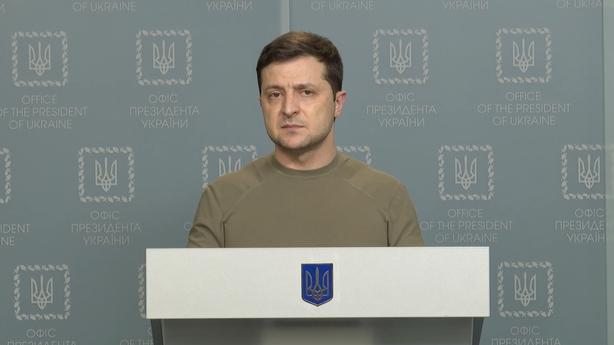
"We have been left alone to defend our State ... Who is ready to fight alongside us? I don't see anyone."
He announced a fully military mobilisation and, as his country was attacked on multiple fronts - from land, sea and the air - he warned that what he termed Russian sabotage groups had now entered the capital, Kyiv.







